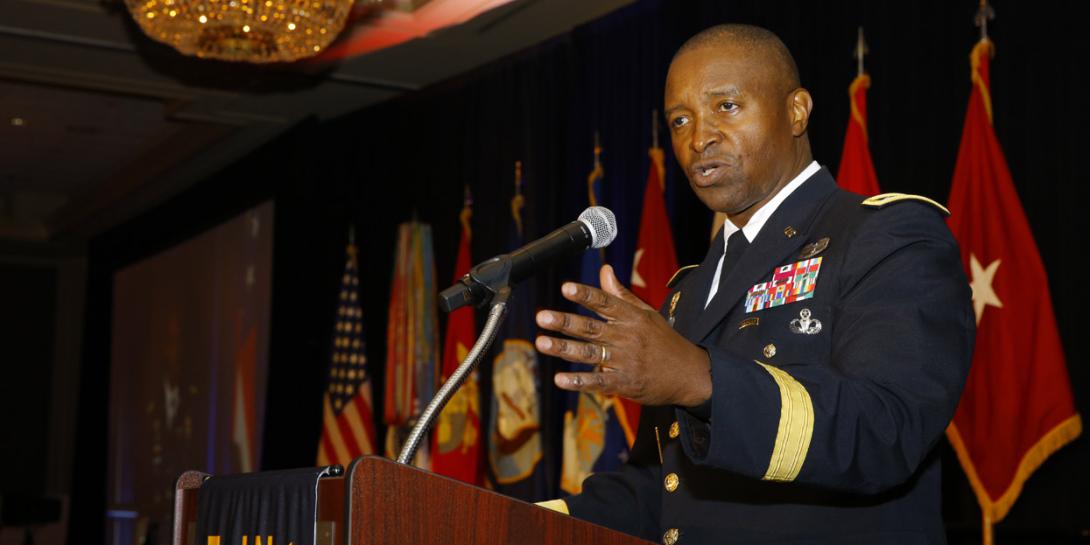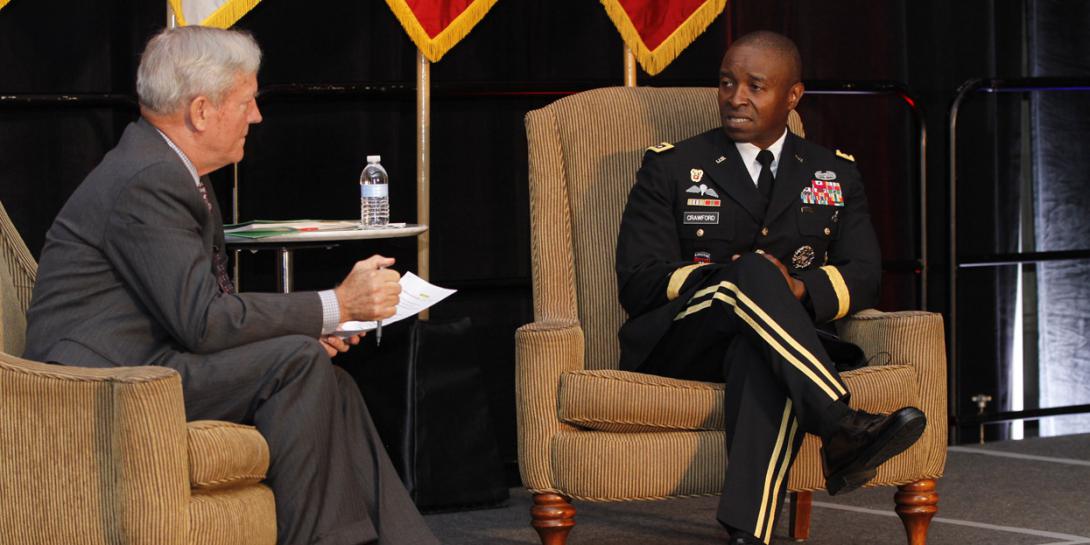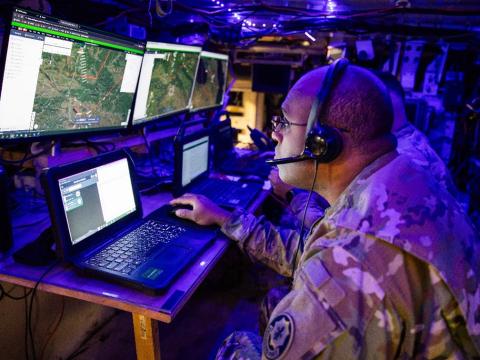Army Considering Artificial Intelligence Task Force
The U.S. Army may establish an artificial intelligence task force over the next 90 days in an effort to help develop needed expertise and better prepare for the service for the future of warfare, says Lt. Gen. Bruce Crawford, USA, Army chief information officer. The service also is creating a cloud computing advisory board.
Gen. Crawford mentioned the potential task force during the AFCEA TechNet Augusta conference in Augusta, Georgia. He tied the task force to the Defense Department’s creation of an Joint Artificial Intelligence Center (JAIC), an effort being led by the department’s CIO, Dana Deasy.
“Our leadership across the department, in response to the National Defense Strategy, is in the process of standing up a joint AI center,” told the conference audience.
The Army CIO noted that the military services support the JAIC. “I don’t know how many of my fellow CIOs from across the services are in here, but I think I can speak for them and say that we’re all in when it comes to this concept being developed by the department,” he reported.
But the Army has some work to do to in preparation for the JAIC. “Internal to the Army, in the next 90 days you’ll likely see the stand up of an AI task force,” Gen. Crawford reported.
That task force, he added, will help Army officials “really get our mind around the specific skillsets that we’re going to need to be relevant and to thrive in this environment that will include AI and machine learning.” The Army leadership, he noted, understands and acknowledges the service does not have “the institutional knowledge to deliver on the strategy.”
LTG Bruce Crawford, @ArmyCIOG6, says that in the coming months will see Army leaders articulating how they get to modernization.#AFCEATechNet
— George Seffers (@gseffers) August 22, 2018
He said the Army Mission Command Center of Excellence already is adding some publications, including training manuals and tactics, techniques and procedures (TTPs) to artificial intelligence systems. “There’s going to come a day when you can ask a question of a device that is going to give you a comparative analysis between a lot of the TTPs that are out there and lessons learned,” he predicted.
In a brief interview with SIGNAL Magazine following his presentation, Gen. Crawford elaborated. “It’s an idea that the Army is considering as we account for the standup of the Joint AI Center at the DOD level. DOD right now is identifying national mission initiatives. We’ve got people on their team working with them already. We’ve identified the best and brightest that we can find … who are working with them.”
The task force will help organize the service in preparation for the JAIC. “This idea of an AI task force is envisioned to allow the Army to organize. Instead of just leaping forward, we’re looking to organize ourselves to make sure that we remain in sync with DOD and the great work that Mr. Deasy is doing,” Gen. Crawford said, adding that he applauds Deasy for “leading a giant effort.”
The service also is developing an advisory board for cloud computing. “One of the things we’ve done over the last 90 days is that the Army is in the process of standing up an advisory board consisting of the best and brightest from commercial industry,” the general told SIGNAL Magazine.
The Army is using a federally funded research and development center (FFRDC) to help recruit experts for the advisory board. Gen. Crawford said Deasy uses a house building analogy to discuss cloud computing. “We’ve got a lot of people who know how to build a house. What we’re looking for now is people who know how to plan for a community of houses,” he said, crediting Deasy.
He added that the advisory organization will help the service determine how to use cloud computing to organize its myriad software applications. “As the Army starts to proceed and look forward at how we want to organize the 8,000 applications that we’ve got—and these are authoritative applications—we’re going to need the talent. We want to leverage an FFRDC to lead a red and blue team advisory group so that when we step forward, the Army is more postured to put those applications in the right cloud environment,” he said.
LTG Bruce Crawford, @ArmyCIOG6: says Army has the most technically competent workforce ever had, but not the talent it needs to accomplish goals.#AFCEATechNet
— George Seffers (@gseffers) August 22, 2018
He stressed that the service is not looking for a one-size-fits-all cloud computing solution. The FFRDC will “make sure the hybrid cloud solutions we do develop in the next six to 12 months are the right solutions for the Army,” he offered.
LTG Bruce Crawford, @ArmyCIOG6, says Army network has to be flat, fast, mobile and protected.#AFCEATechNet
— George Seffers (@gseffers) August 22, 2018






Comments